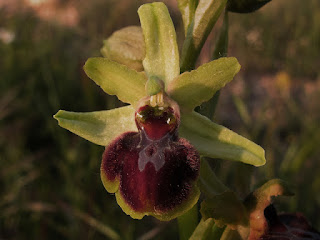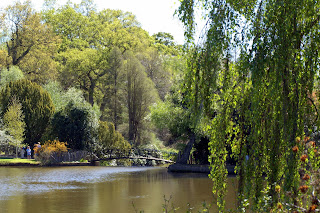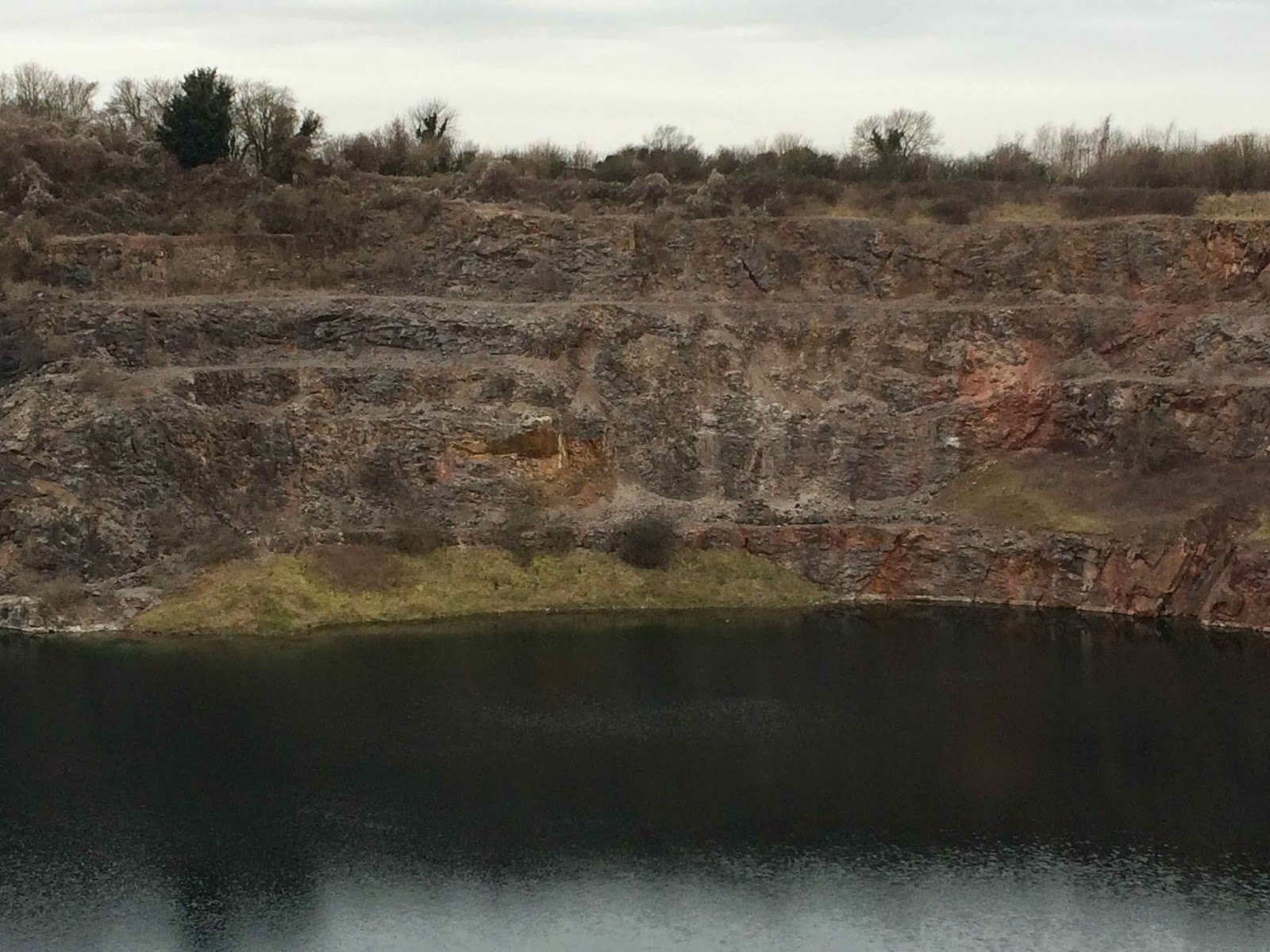By Alida Robey
I am always so impressed and uplifted when I see the first bees out, braving the cold and wind to forage in the spring sunshine. The buff-tailed bumblebee (Bombus terrestris) braves the winter, emerging on fine winter days to forage, but another species that you are likely to see right now is the ‘early bumblebee’ or Bombus pratorum.
 |
| The early bumblebee (Bombus pratorum). Photo credit: S. Rae [via Flickr CC by 2.0] |
How to tell one stripy buzzing creature from another
Being larger and hairier than honey bees, bumblebees in general have a bit more protection to cope with colder weather conditions, giving them an advantage when it comes to foraging in the early spring. The early bumblebee is common throughout Britain from March until June or July, and in milder parts of the south of England, as early as February.
The Bumblebee Conservation Trust has a very good identification chart and video guide to help distinguish different bumblebee species. When trying to distinguish between species of bee, size, tail colour and stripes are the features to look at. Bombus pratorum is noticeably smaller in size than other bee foragers at work in the spring. Queens, workers and males have a yellow band on the thorax and abdomen, though the band across the abdomen is less obvious or sometimes absent in workers.
The tail is a strikingly dark orange-red, but can be tricky to see as this colouring is only in the final tail section and may also fade with time. Males have a broad yellow collar that wraps around the thorax, and yellow hair on the face.
The bee’s choice of diet
The early bumblebee is a good pollinator of flowers and fruit, enjoying in particular white clover, thistles, sage, lavender, Asteraceae, cotoneaster, alliums and a range of daisy type flowers; it is also an important pollinator of soft fruit, such as raspberries and blackberries.
Habitat and lifecycle
B. pratorum’s nesting period is shorter than other bumblebees at just 14 weeks. Queens are fertilised in late summer and then usually go into hibernation. They will emerge from hibernation between March and May depending on the climate in that location and find a place to make their nest. However, because of their short nesting period, they can have two or even three colonies a year in the warmer, southern regions of the UK; new queens mate and, instead of hibernating, immediately start a nest.
At the start of a colony cycle, the queen has a large store of food, which allows her to start laying her eggs to produce workers and foragers who will then gather all the supplies she needs in order to remain in the nest and continue to lay eggs. As the colony cycle nears its end, she will produce more queens before dying herself, allowing the young queens to take up the cycle for the next spring. These young queens will go out to forage for themselves and return to the nest for shelter, but they don’t contribute to the dying colony. When they are ready to mate, the young queens follow the scent of chemical attractants deposited by males. The old colony dies off, with B. pratorum rarely seen after July in the UK, and so the cycle continues for another season.
The early bumblebee is known for nesting in unusual places such as abandoned bird boxes or rodent nests or just under the ground. Colonies are small at less than 100 workers.
Cuckoos
The bumblebee is no more immune than other creatures to being taken advantage of. Of the 24 bumblebee species in the UK, 6 are ‘cuckoo bees’, which don’t make their own nests, but rather kill off the queen in another nest and get the worker bees to raise her larvae. It is the species Bombus sylvestris, which is a nest parasite of the early bumblebee.
Buzz Pollination
I was intrigued to hear this term, describing a process unique to bees, whereby they catch hold of a flower and by emitting a high pitched buzz shake free the pollen trapped inside (watch a video here). I had also often wondered if bees had any way of knowing whether others had raided the pollen stores before them. It turns out that they have smelly feet that leave a distinctive odour on flowers, which indicates to other bees that the supplies have been raided.
What can we do to help?
As you will know, our pollinators are in decline not just in the UK, but globally. I was saddened to learn that two species of bumblebee have become extinct in the UK since 1900 – Cullums bumblebee (Bombus cullumanus) and the short-haired bumblebee (Bombus subterraneus). Having lost 97% of wildflower-rich grasslands, we can take action to plant the flowers that are rich in pollen and nectar and therefore of most benefit to bees – some flowers, like pansies, and most double flowers may look pretty, but are of little benefit to bees.
Then there is the whole issue of pesticides. Neonicotinoids, used in some pesticides, are lethally toxic and infiltrate every aspect of the plants systemically – one teaspoon of neonicotinoids is enough to give a lethal dose to one and a quarter billion bees. Professor Dave Goulson, Professor of Biology at the University of Sussex and a bee expert, has been on a mission to see how widespread the use of these pesticides are as plants with a ‘Bee-friendly’ label may have been treated with these pesticides before being put on the shelves of the plant nursery.
Splitting and sharing plants and growing from seed can help ensure the plant hasn’t been exposed to these pesticides – it’s another thing we can do as gardeners to help these valiant and much-assailed vital workers in the garden. Also, as a Friend of the University of Bristol Botanic Garden, you have a unique opportunity to grow special plants from seed collected at the garden!
Another fun way you can help is to take part in The Great British Bee Count using an app developed by Friends of the Earth and which will be running again this year from 19 May – 30 June 2017. This is an initiative to help monitor the numbers of the different bee species found in the UK. You can see the results of last year’s survey and access various educational resources on their website.
Alida Robey has a small gardening business in Bristol. For several years in New Zealand she worked with others to support projects to establish composting on both domestic and a ‘city-to-farm’ basis.

























